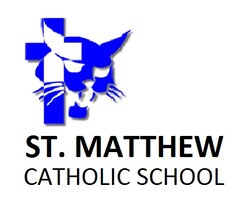As the world changes rapidly in the technological sector, so to do the demands that the school community and businesses place upon today's learner. In completing this course, we hope you will better understand the ever-increasing impact that belonging to a digital world signifies, as well as learn some skills to better place yourself as a 21st-century learner.
Course Outline
Lesson 1 - The 9 Elements of Digital Citizenship
Lesson 2 - You Make The Call
Lesson 3 - Protecting Your Work and Respecting the Work of Others
Lesson 4 - Online Safety and Preparation for the Future
Lesson 1 - The Nine Elements of Digital Citizenship
In this lesson, you will learn to recognize the elements of digital citizenship:
- Digital Etiquette
- Digital Communication
- Digital Literacy
- Digital Access
- Digital Commerce
- Digital Rights and Responsibilities
- Digital Law
- Digital Health and Wellness
- Digital Security
You will have 1 class period to complete this activity.
Who is a digital citizen?
You!
Basically, a digital citizen is anyone who uses digital tools such as computers, cell phones, or the internet in their work, school or for recreation. Just like citizens of a city have to adopt rules and standards of behaviour in order to live together, those of us in the digital world should do the same.
There are general guidelines we can all follow in order to stay safe and work well in the digital world. These guidelines are outlined in the elements of digital citizenship.
What are the 9 elements of digital citizenship?
The elements of Digital Citizenship, defined by Mike Ribble and Gerald Bailey are as follows:
- Digital Access
- Making sure that all students have equal access to digital tools like laptops, digital cameras, and the Internet
- Providing time and equipment for students with special needs
- Making students aware of locations and resources you can use off campus
- Digital Commerce
- Using computers to buy and sell items on commercial websites and auction sites
- Subscribing and purchasing media using tools like iTunes
- Digital Communication
- Exchanging information using:
- cell phones
- instant messaging
- text messaging
- web pages/blogs/wikis
- Exchanging information using:
- Digital Literacy
- Learning the basics of using a computer
- Evaluating online resources to make sure they are truthful and accurate
- Learning how to find information on a specific topic on the Internet
- Digital Etiquette
- Using technology in a way that doesn't affect others negatively
- Using technology only when it is appropriate
- Respecting others online by not posting information that is hurtful or untrue.
- Digital Law
- Understanding how to use and share music, photos, and movies legally
- Creating original works that are free from plagiarism
- Respecting the privacy of others and the integrity of networks in terms of passwords and data
- Digital Rights and Responsibilities
- Following Acceptable Use Policies
- Using technology responsibly
- Reporting inappropriate use of technology resources
- Digital Health and Wellness
- Using proper hand placement and posture when keyboarding
- Balancing time spent using digital tools with time spent offline
- Digital Security
- Protecting hardware and network security by using secure and secret passwords
- Protecting personal security by not posting personal information online
Still unclear? Here is a link to the video we watched at the beginning. Because this is online, many of you can access and watch it at home. Feel free to browse other Digital Citizenship resources online to get more information.
Your Task:
- Read the Acceptable Use Policy and the Student Handbook. As well, find one website on your own that deals with either Digital Citizenship and/or Internet Safety and think back to the information learned so far in your other courses.
- Check out our Digital Code of Conduct!
- Find specific examples of where each of the 9 areas of digital citizenship are addressed by St. Matthew Catholic School. Be sure to cite any sources you use from other websites. Use the Google Forms document here to record your responses. If there are areas of Digital Citizenship that are not covered, write a suggestion of what should be added to cover that topic.
